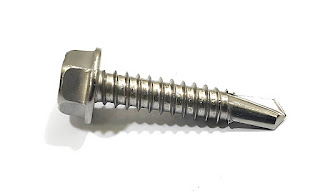What Is the Difference Between Self-Tapping Screws and Self-Drilling Screws
Self-tapping screws and self-drilling screws are two popular options for fastening materials together. Regarding the function of their threads are concerned, both screws technically considered self-tapping screws. However, they are not the same. There is a crucial difference lies in the function of their points. But what is the difference between them? Let us take a closer look.
What Are Self-Tapping Screws
The primary difference between Self-Tapping and Self-Drilling is the pilot hole. Self-tapping screws are designed to create threads in material as they are driven into it. Essentially, they "tap" their own threads into the material, hence the name. However, self-tapping screws require an initial pilot hole before the fastening process can begin.
What Are Self-Drilling Screws
Self-drilling screws, on the other hand, are designed to drill their hole and create threads as they are driven into the material. The beauty of self-drilling screws is that they can perform the functions of both a drill bit and a fastener. This dual functionality allows for efficient and effective installation. Self-drilling screws have a sharp point that can drill through the material without the need for a pilot hole. So they are also known as self-tapping screws with a drill bit.
🔗Difference Between Self Tapping Screws and Non-Self-Tapping Screws
Comparison of Self-Tapping Screws and Self-Drilling Screws
One of the main differences between these two types of screws is the material they are best suited for. Self-tapping screws are typically used in softer materials such as wood, plastic, and sheet metals, where the threads can easily be formed. Self-Drilling Screws are better suited for harder materials such as metal, where creating threads without first drilling a hole may be difficult.
Another difference is the shape of the tip. Self-tapping screws typically have a sharp, pointed tip that helps them to start their own threads. When it comes to recognizing self-drilling screws, all you need to do is take a look at their point. One of the standout features of self-drilling screws is their unique point design, which curves gently at the end and is shaped like a twist drill. The fluted or grooved tip helps to drill a hole into the material before forming threads.
When it comes to installation, both types of screws can be used with a power tool or by hand. The self-drilling screws known for their quick drilling ability. However, it is important to note that self-drilling screws may require a bit more force to drive into the material, especially if drilling through metal.




